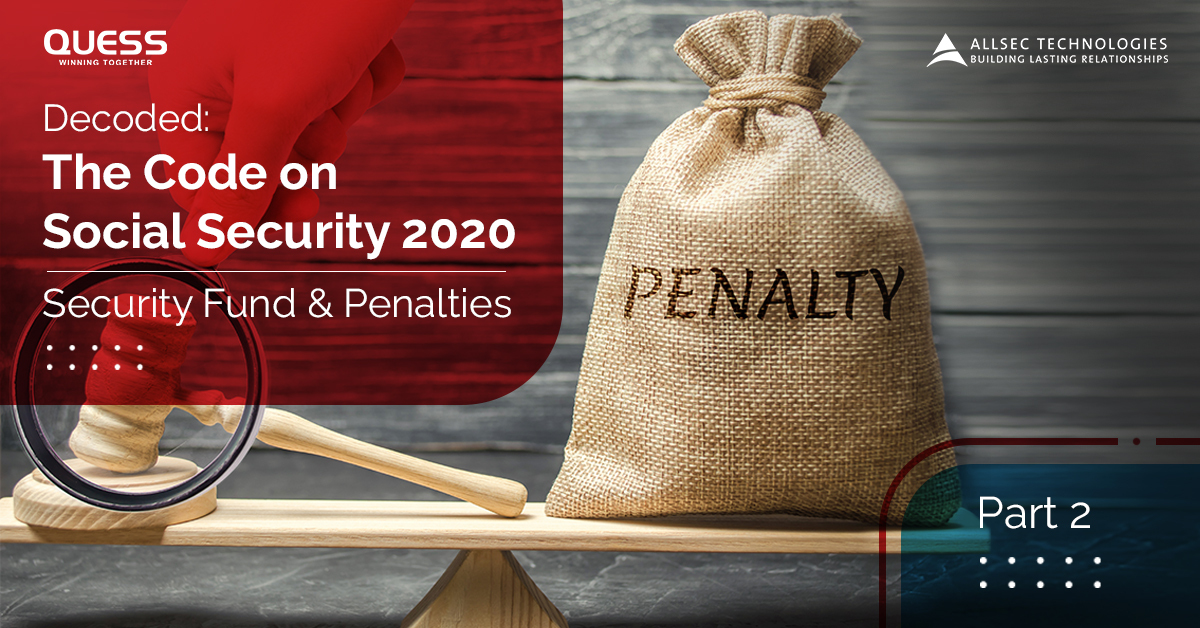
Decoded: The Code on Social Security, 2020 – Part 2
The Code on Social Security 2020 aims to improve social security coverage for all employees, including unorganized and gig workers. In Part 1 of Decoded: The Code on Social Security, we covered certain key implications of the code on compliance management, specifically about the change in the definition of an ‘employee’ and gratuity benefits.
In this follow-up, we explain the implications of other benefits accruing to employees, the penalties with regard to defaults, and the creation of a social security fund.
ESI and EPF
The Employees’ State Insurance Act, 1948 (ESI) and the Employees’ Provident Fund and Miscellaneous Provisions Act, 1952 (EPF) are among the nine codes subsumed. While a majority of the provisions have been retained, some noteworthy changes are:
- Companies engaged in “hazardous” activities such as abrasive blasting, pesticide manufacturing, smelting/ refining industries, etc. would have to extend ESI even if they employ only one person.
- If an employer defaults on ESI, the State Corporation can now cover these damages directly from the company.
For companies, a missed ESI payment will now mean penalties, interest, damages as well as the cost of initial insurance compensation.
However, a minor change in the EPF code can ring relief to employers. Previously, the act did not mention a limitation period to launch a non-payment enquiry. Now, default enquiries cannot be conducted for a period older than 5 years.
Social Security Fund
Under the code, a social security fund will take care of the benefits payable to unorganized, gig and platform workers. The fund will receive backing from the central and respective state governments, in addition to accepting CSR funding.
To be eligible to receive the benefits, all workers will be required to register themselves on a government portal with their Aadhar details. Section 113 (1) of the code requires that every unorganized, gig and platform worker will have to be registered on a self-declaration basis. For workers, this means another compulsory documentation requirement.
For businesses, checking the status of registration of even short-term employees may become mandatory. Additionally, digital aggregators or intermediary platforms will have to contribute at least 1-2% of their annual turnover (but not exceed 5% of the amount payable to the workers) as a contribution to social security funds for gig and platform workers. The seventh schedule defines the list of aggregators.
Penalties
The penalties for non-compliance with code requirements have become stringent. Any violations by employers could result in imprisonment ranging from six months to 3 years, in addition to a fine of Rs 50,000. Repeat violators could see face up to 5 years of prison time and a fine of Rs 3,00,000.
The cost of non-compliance may be higher, both in terms of money and reputation. This may force companies to toe the line with respect to the code.
Other measures, such as opening up career centres that connect companies with potential employees, the option to opt-out of voluntary security coverage for smaller establishments as well as providing a limitation on the period for initiating EPF and ESI past-recovery, the code has provided some relief for employers as well.
Summary
Combining nine labour laws into a single code is likely to ease the burden on teams concerned with compliance management. However, ambiguity in terms of overlapping definitions, employment law, certain benefit payments and other uncertainties will need to be cleared up. Companies will need to keep a close eye on the schemes and any notifications issued by the government to ensure error-free implementation of the changes.
To understand the impact of the code on your existing compliance structure and P&Ls, reach out to us.


